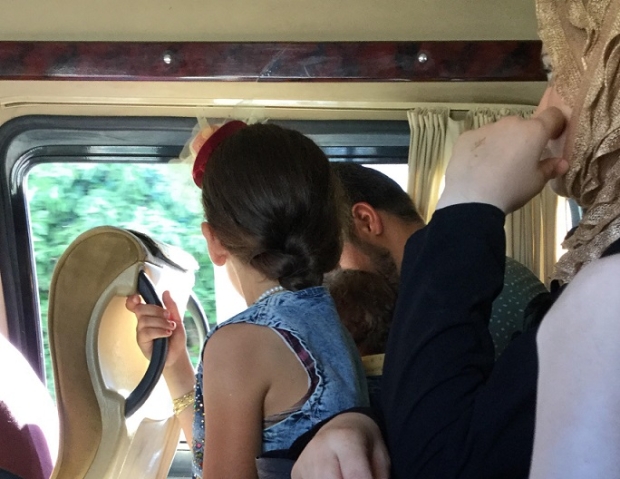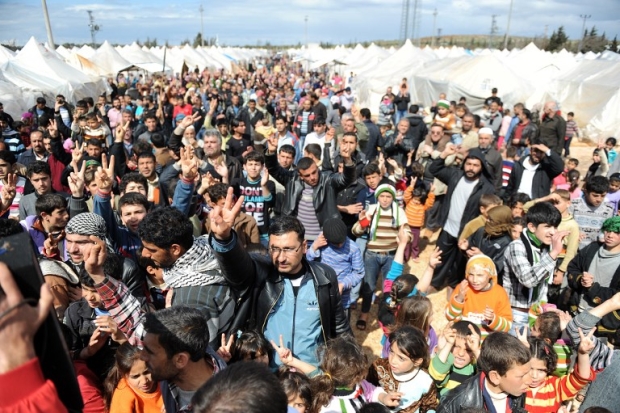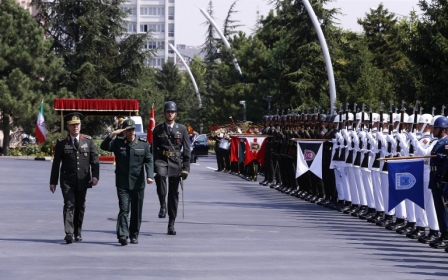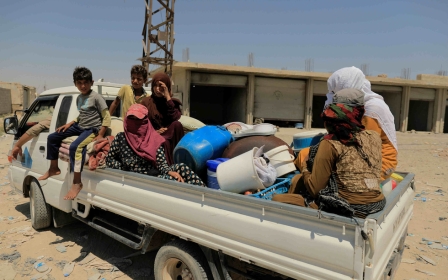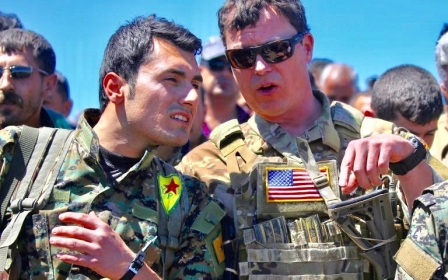My visit to southern Turkey: Postcard from a borderland on the edge
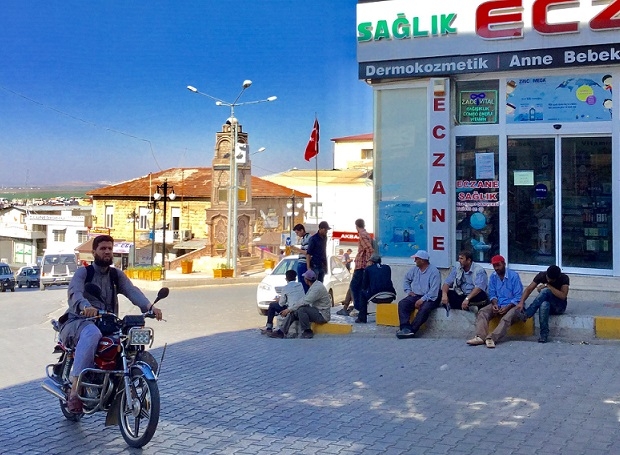
REYHANLI - On the southern edge of this Turkish town, one stands no more than 200 metres from the new fence marking the border with Syria.
There is a small, improvised bazaar where clothes are spread on the ground, then a slope and the fence, still shining in the sunlight, along which a military patrol moves back and forth.
Every day the older order loses more and more of its grasp. Borders are being redrawn, at first in the minds of those fighting or escaping the war, later - perhaps - in a more literal sense
The town extends northwards for some two miles. In the main square, there is a poignant monument to the victims of the 2013 terrorist bombing which killed more than 50 people and awoke Turks to what was happening on their borders.
Four years later, the identity of the perpetrators is still far from established. The Islamic State (IS) group claimed responsibility for the attack almost immediately afterwards, but the Turkish government had its eyes on the Syrian intelligence apparatus, perhaps in collusion with the notorious revolutionary Mihrac Ural, who started his career agitating for the return of the Turkish Hatay province to Syria. More plausibly, the group then known as Nusra Front has also been blamed for the attack.
After standing for a few moments in front of the monument, I walk to the minibus heading for Antakya. As it departs, a Syrian boy runs by my window and hands me a closed envelope. On the outside, one short scribbling: July 15. I was visiting Reyhanli on the anniversary of the failed 2016 Turkish coup.The message inside was more difficult to decipher. With little syntax and no grammar, it combined Turkish and Arab words. It took me the best of the one-hour drive to Antakya to get a good grasp of what it said. It was signed in Arabic by someone calling himself “The Optimist” and spoke hopefully of a time of peace and security to come, linking it to the failed coup, a new beginning when “Turkey wakes up”.
The new Casablanca?
Here was the modern equivalent of a message in a bottle. A group of refugees on the border had spent their scarce resources on printing leaflets expressing their solidarity with the Turkish people, but also defending the hope that a new Turkey after the coup will change its Syrian policy and help put an end to the war.
Antakya is not a forgotten corner of the world, but a major node in the network of flows - of money, people, power - to and from Syria
Sitting next to me on the minibus was a Syrian family with a young daughter and a baby boy. The daughter carried the temporary residence cards granted by the Turkish state, while the two parents, still implausibly young themselves, kept busy with the crying baby.
Before Antakya, we were told to stop by a police patrol, visibly checking identities against a list of suspects. Days before, two policemen had been shot dead outside the city. The police checkpoint was, however, the last sign of the war raging just across the border.
Antakya has received its fair share of refugees, but by now they have disappeared into the city landscape, which even before the war had a large share of Arabic speakers. The refugees have taken up jobs in the large bazaar, some of them giving new life to small workshops feeding the street sellers.
But Antakya is not Casablanca. It is not a forgotten corner of the world, but a major node in the network of flows - of money, people, power - to and from Syria. These influences are disorganised and chaotic. Or, better put, multiple and contradictory.
Ambiguous Syria policy
In Samandag, on the coast, I meet a group of Turkish Alevis, a broad spectrum of heterodox Muslims who make up as much as 15 percent of the country’s population and are broadly supportive of the Syrian regime. Their lives before the war took place in an integrated cultural and economic space extending from the Turkish Mediterranean coast to Aleppo and Latakia in Syria.
Their Arabic is much better than their Turkish and, in some obvious respects, they may consider themselves more Syrian than Turkish. They want to know if I like Syria, but do not ask about my opinions of Turkey.
When refugees from Syria started to arrive at the beginning of the war, the Alevi community pushed them away. They were either on the side of the regime, in which case their place was fighting in Syria, or part of the opposition, and that made them an unwelcome and dangerous presence.
So where does Turkey stand in the Syrian war? Nominally, on the side of the opposition, but when the support to militant groups across the border created growing security problems and threats, the border was quickly sealed - fences were already going up in the summer of 2014 - and Turkey’s position became more ambiguous.
The old world
Sitting by the shady benches of the Catholic church in old Antakya, a building sharing a wall with the Sermaye mosque, exiled Armenians from Aleppo tell me how life used to be in this part of the world.
An old gentleman tells me how he was born in Aleppo, but married in Antakya. His factories were just outside Aleppo, so he used to travel between the two cities several times a week. It took a little over an hour.
The old Armenian from Aleppo then tilted forward and whispered: “I come from Armenia, but not the Armenia on the map. The old Armenia, the one from Yerevan to Israel. Do you know what I mean?”
I had no way of knowing if these feverish dreams of old lands were being awakened by the chaos and destruction around him, but one thing is certain: responsible and cool minds may discuss de-escalation plans and political solutions to the war, but beneath the surface more dangerous thoughts are brewing.
Those who have seen the destruction of the last five years no longer believe in the old order. They believe anything can be built on the Syrian ruins. This should be taken seriously.
'I come from Armenia, but not the Armenia on the map. The old Armenia, the one from Yerevan to Israel,' he tells me. 'Do you know what I mean?'
The open war, announced in the shady benches of the Catholic church, started the next day. You may remember how Jabhat al Nusra, once identified as an al-Qaeda affiliate, recently changed its name, first to Jabhat Fateh al Sham and then, when it merged with several other groups this January, to Hayat Tahrir al Sham (HTS).
The alliance was now seeking to absorb every other militia in the northeast. The only obstacle left in its way was Ahrar al-Sham, a coalition more directly engaged in the war against Assad - its priority is to depose the president rather than to establish Islamic rule - and thus more closely connected and supported by Turkey. Former allies, the two coalitions were now at war.
In less than three days, HTS overran their powerful rival, seizing control of a strategic border crossing with Turkey in some of the heaviest fighting in rebel-controlled territory since the start of the conflict.
Back to the drawing board
With HTS in control of all the territory across the border - only the border crossing itself is under a nominally neutral civilian administration - Turkey is back to the drawing board.
The most immediate consideration must be that the group most likely responsible for the Reyhanli bombing is now the dominant force in northeast Syria. With HTS in full control of the Idlib area, there is nothing to stop Russia from arguing that a repeat of the Aleppo siege has become necessary, but that would send a fresh new wave of refugees into Turkey and seal the fate of the Syrian opposition.
And if HTS turns out to be weaker than it now seems, the Kurdish-controlled Syrian Democratic Forces may soon turn against it and move on Idlib. Turkey, which had already mobilised thousands of troops to combat the Kurdish People’s Protection Units (YPG) in Afrin, has started discussing a much wider move to bring the whole of Idlib region under its control.
Every day the older order loses more and more of its grasp. Borders are being redrawn, at first in the minds of those fighting or escaping the war, later - perhaps - in a more literal sense. Chaos brings destruction, but also burning images of a new order.
- Bruno Maçães is the author of The Dawn of Eurasia: On the Trail of the New World Order, forthcoming from Allen Lane in January.
The views expressed in this article belong to the author and do not necessarily reflect the editorial policy of Middle East Eye.
Photo: Refugees sit nearby the monument in Reyhanli, waiting for jobs (MEE/Bruno Maçães)
New MEE newsletter: Jerusalem Dispatch
Sign up to get the latest insights and analysis on Israel-Palestine, alongside Turkey Unpacked and other MEE newsletters
Middle East Eye delivers independent and unrivalled coverage and analysis of the Middle East, North Africa and beyond. To learn more about republishing this content and the associated fees, please fill out this form. More about MEE can be found here.




